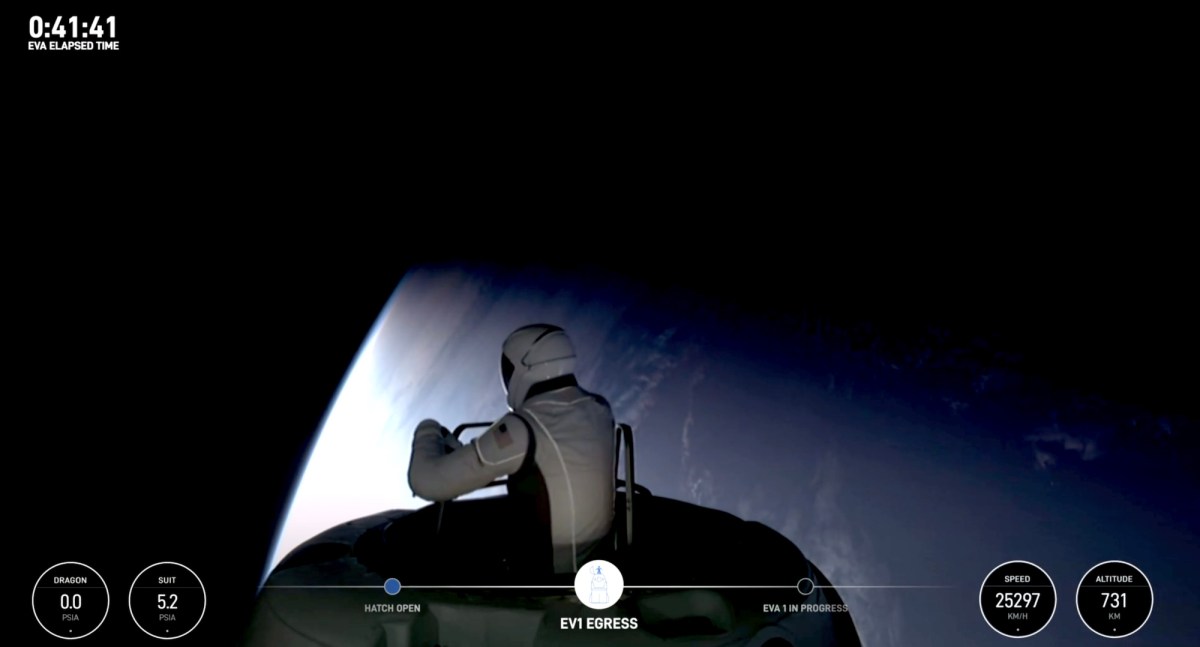WASHINGTON — Astronauts on the Polaris Dawn mission conducted the first spacewalk on a non-governmental mission Sept. 12, briefly emerging from their Crew Dragon spacecraft.
Jared Isaacman, commander of the four-person crew, emerged from the hatch in the nose of the capsule at approximately 6:52 a.m. Eastern. Using a set of handholds and rails called a “skywalker” by SpaceX, he tested the mobility of the SpaceX-designed extravehicular activity (EVA) suit while standing in the hatch.
“Congrats to the huge team effort that it took to get us to this point. We know it’s just the start,” he said shortly before returning inside the spacecraft.
He reentered the cabin of Dragon about eight minutes later. Mission specialist Sarah Gillis then emerged from the hatch at 7:05 a.m. Eastern, also spending about eight minutes in the hatch performing similar suit mobility tests.
Neither astronaut reported any major issues with the suits as they showed how they could move around. As planned, neither floated free from the spacecraft, keeping hold of the skywalker while standing in the hatch.
The spacewalk was the highlight of the five-day mission that launched two days earlier, testing the new spacesuits. The EVA also required modifications to the Dragon itself to allow the cabin to be depressurized and later repressurized.
Isaacman exited the hatch about 40 minutes after SpaceX called the start of the spacewalk, based on when the four crew members activated their suits. The other two crew members, pilot Kidd Poteet and mission specialist Anna Menon, also wore the EVA suits because the cabin was depressurized, but remained in the cabin. Once Gillis returned inside, she closed the hatch and the cabin repressurized.
Preparation for the spacewalk started shortly after Crew Dragon reached orbit. Cabin pressures slowly declined, and oxygen concentrations rose, to allow the crew adjust to the lower pressures in the suits.
In the roughly 48 hours between launch of Polaris Dawn and the spacewalk, the Crew Dragon spacecraft set an altitude milestone when the spacecraft maneuvered about 15 hours after launch, raising its apogee to approximately 1,400 kilometers. That is the highest altitude for a crewed spacecraft in Earth orbit and the highest altitude for a crewed mission since Apollo 17 went to the moon in 1972.
Crew Dragon spent six orbits at that higher apogee before lowering it to about 700 kilometers for the spacewalk. The crew has also been conducting research while in orbit, which will continue through the remainder of the five-day mission.
